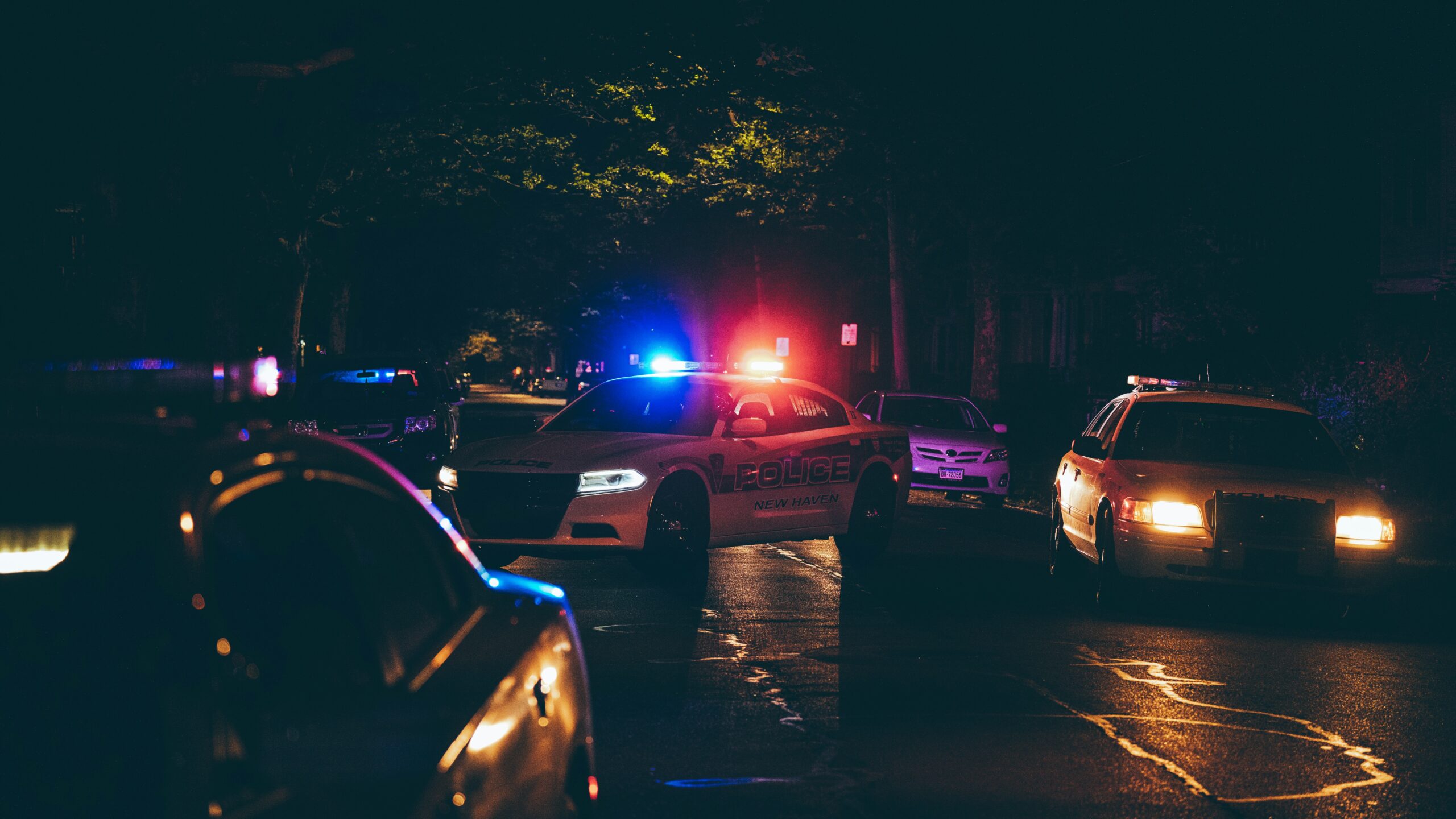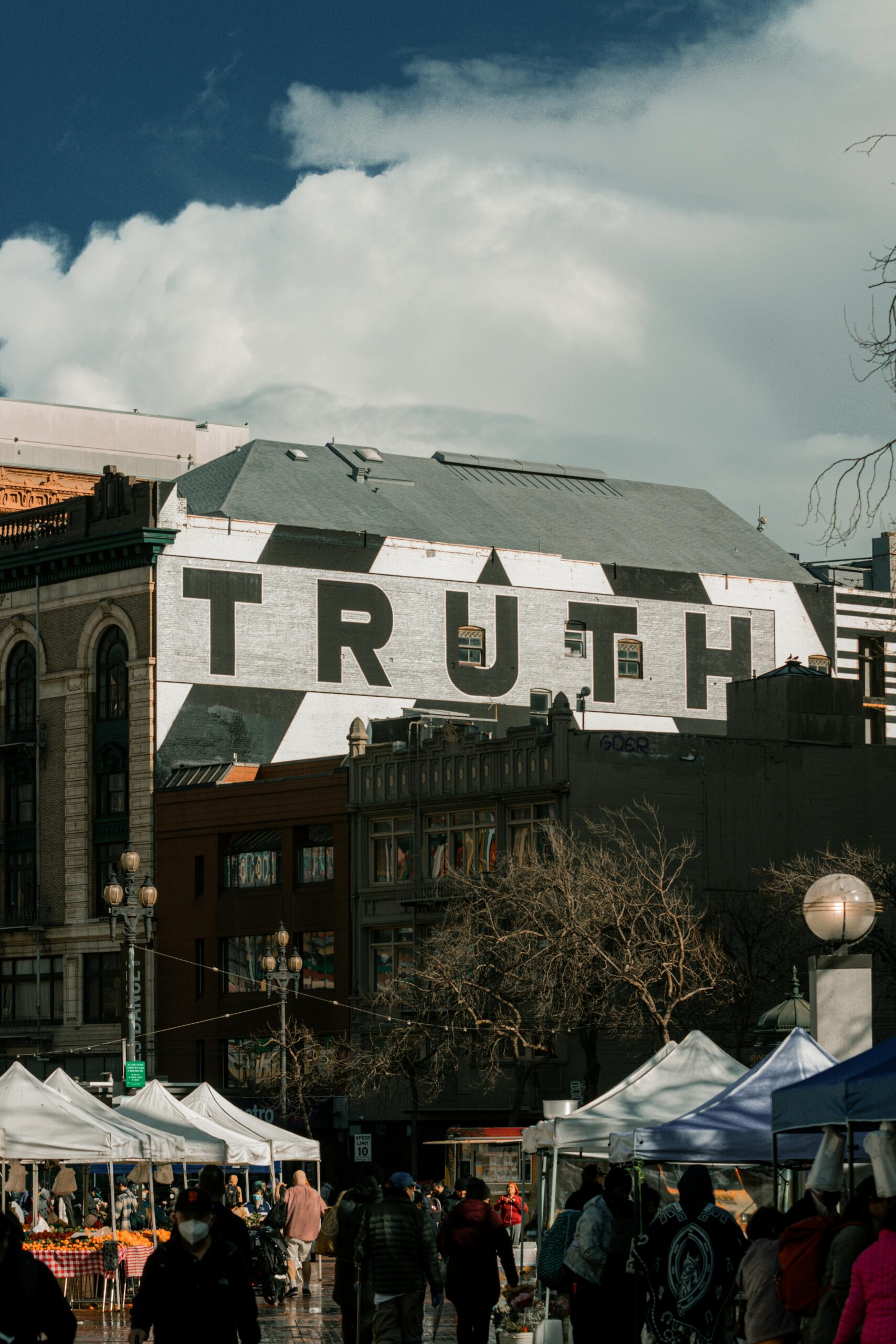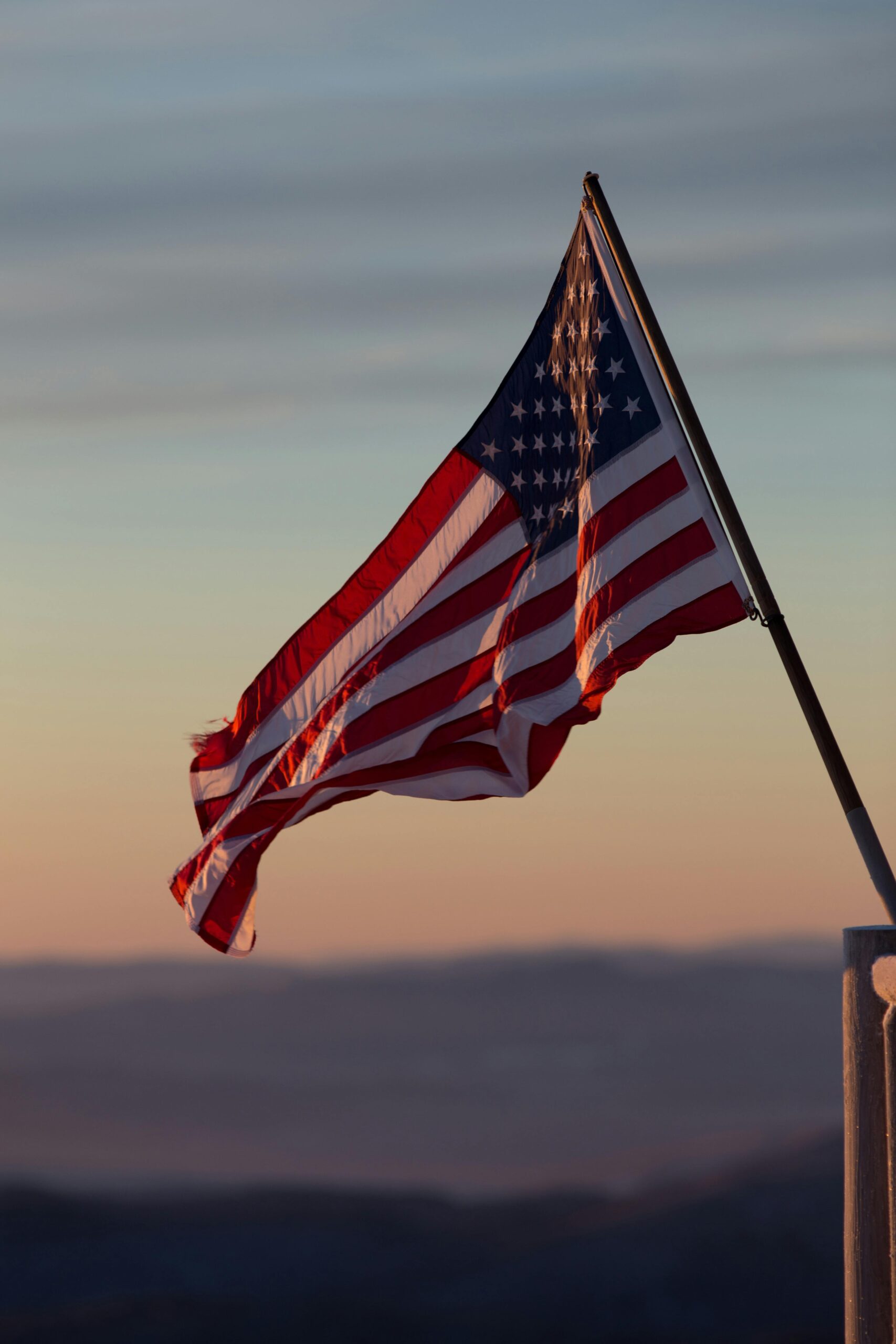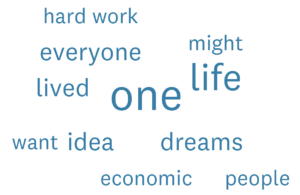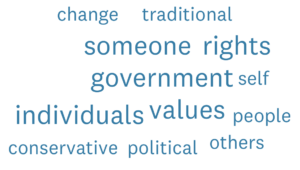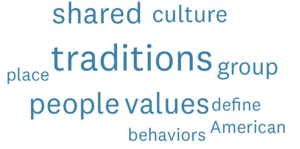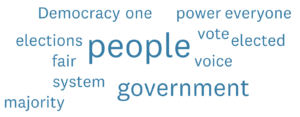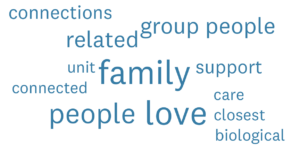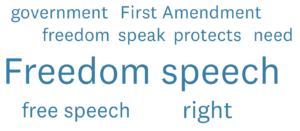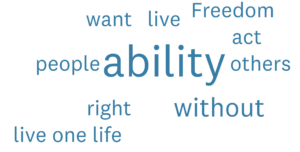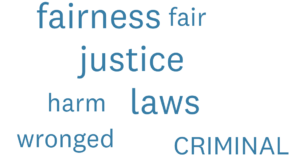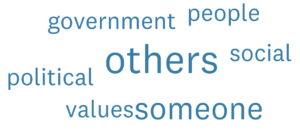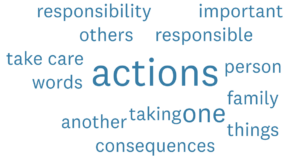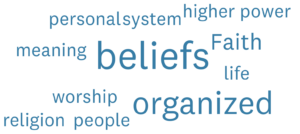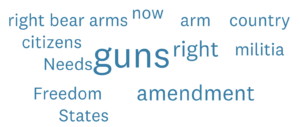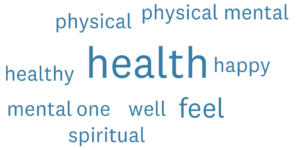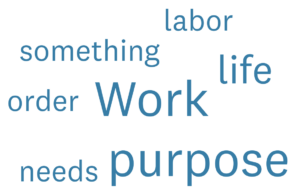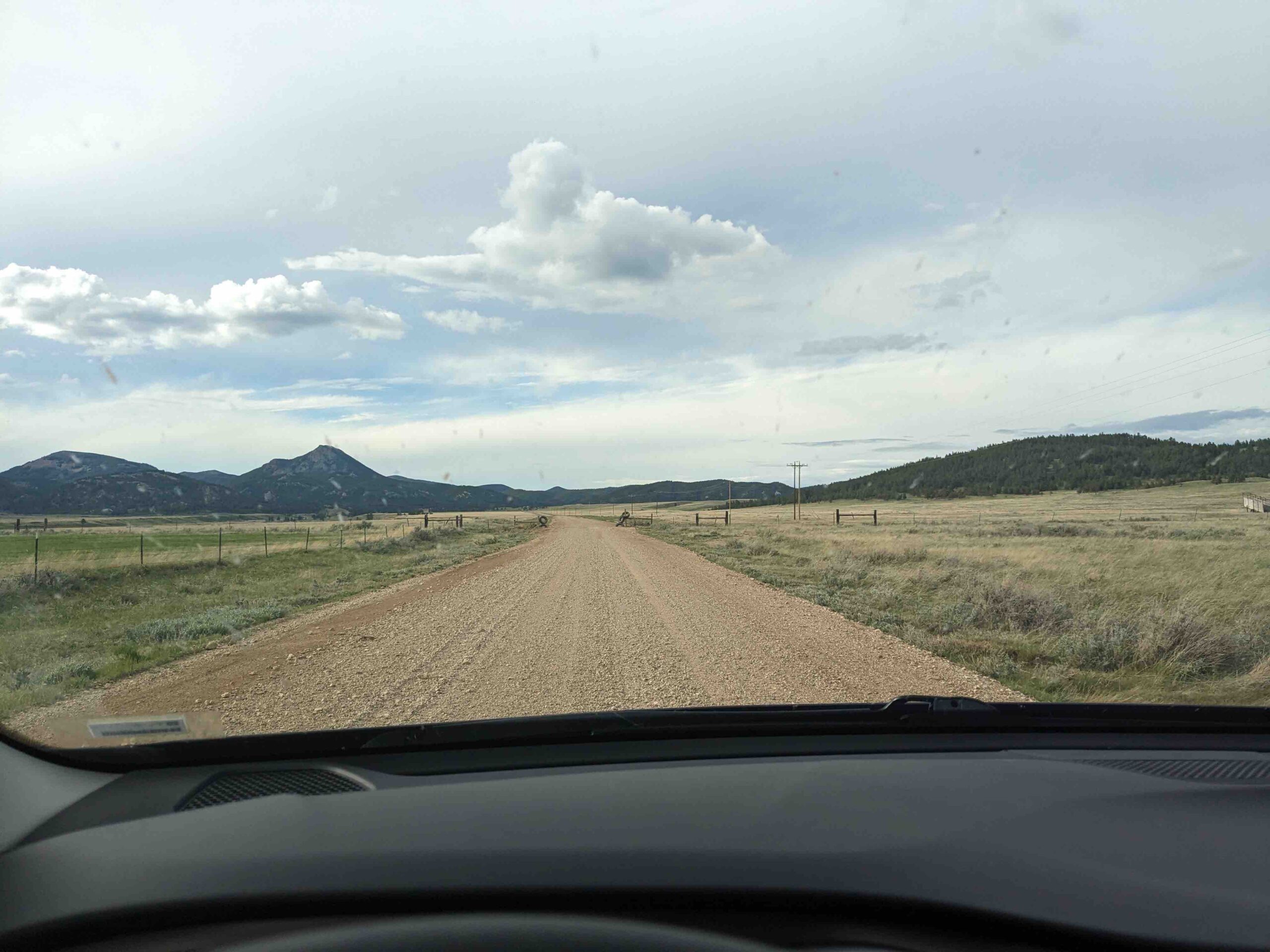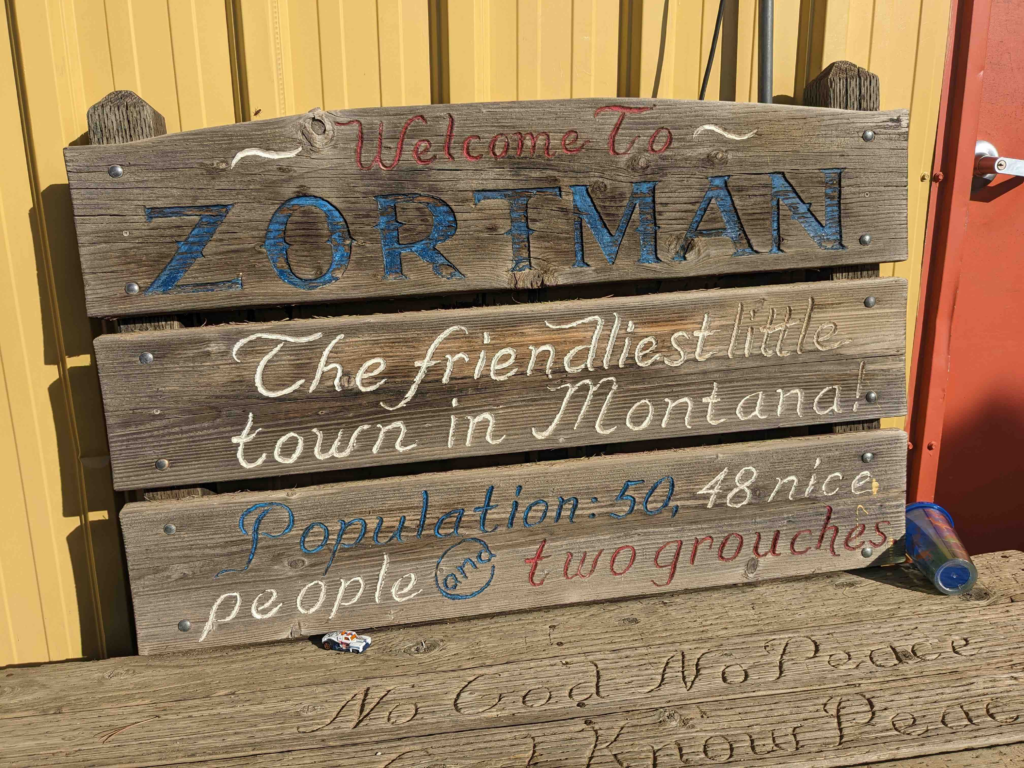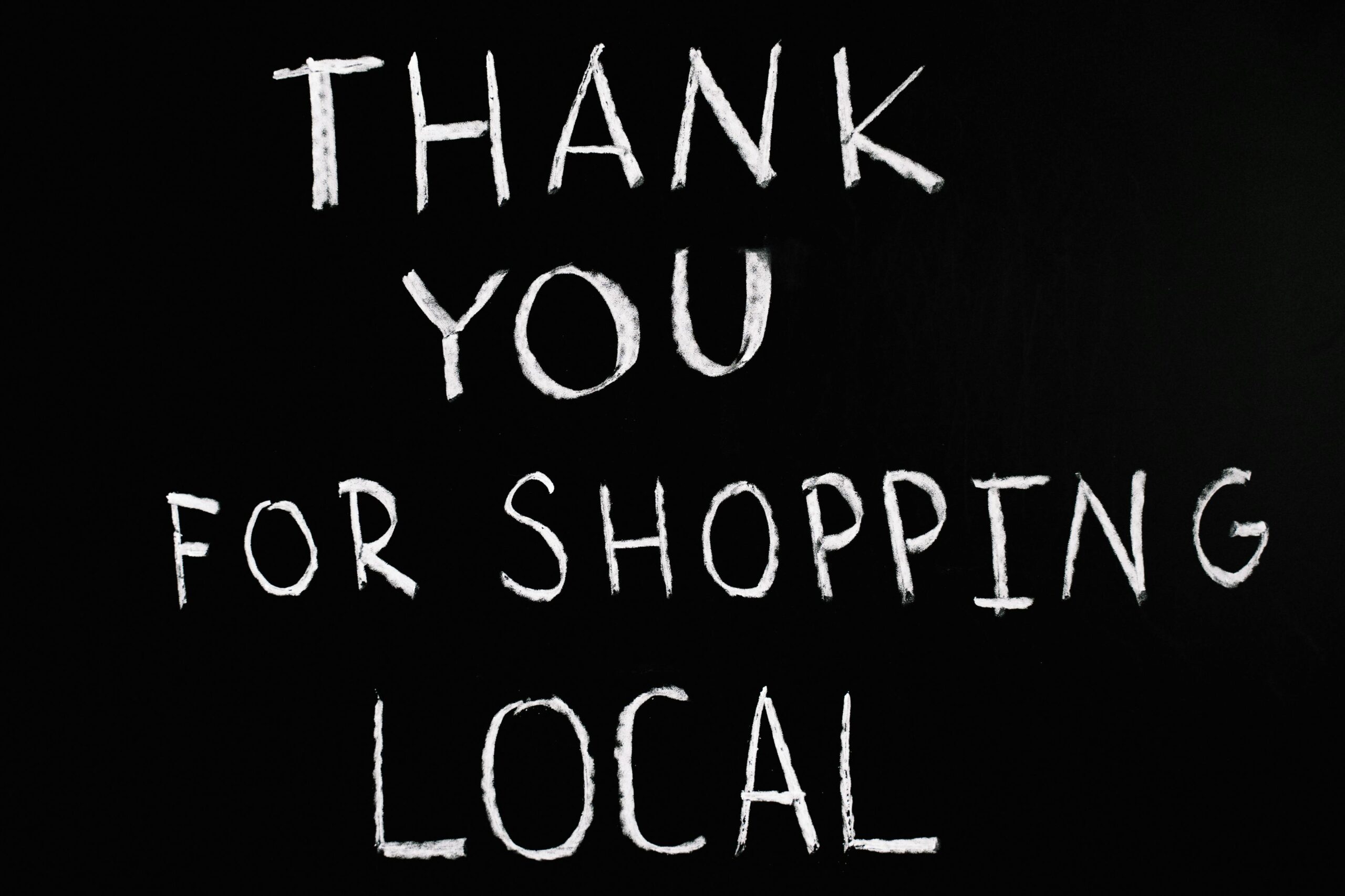As the 2024 campaign reaches its crescendo, Americans’ immediate and long-term hopes and fears are front and center. They are a visceral part of the story, heard in intimate conversations and seen in media coverage.
This summer, the American Communities Project delved deeper into understanding the drivers behind these complicated and often anxious views in our ongoing study of the fragmentation of American society, funded by the Robert Wood Johnson Foundation. The latest ACP/Ipsos survey of 5,000-plus Americans finds an overwhelming majority of residents across the Project’s 15 community types have hope for their personal future, but the percentages drop dramatically for the nation’s short- and long-term futures. Reasons for optimism and pessimism vary, but a lack of trust in leaders is a significant concern.
The survey examines the composition of Americans’ personal connections and finds their immediate social circles are complex and diverse across the community types. The survey specifically asks whether or not people of different political and ideological affiliations, income levels, religions, races/ethnicities, and sexual and gender identities are part of respondents’ social circles. In particular, it finds that most people’s circles have fewer scientists and government officials or workers, and only a tiny percent of journalists.
Most importantly, the survey finds these outlooks and personal connections play a large role in shaping Americans’ divergent worldviews including how they perceive inflation and immigration, two issues of sustained importance in American life that are dominating this campaign season. Taken together, the survey’s findings offer a map to better understand the different values and concerns that define the nation and suggest why finding common ground remains a vexing problem.
Four Key Takeaways
Four points stand out in this survey that center on Americans’ varying perceptions and experiences.
Across communities, optimism for the future is focused on one’s own vantage point: Your life is generally good, or your faith is strong. At the same time, pessimism comes from outside forces: The country seems to be falling apart, leaders never seem to be able to do the right thing, or there is a lot of crime and violence. However, community types are not a monolith. The African American South stands out for having a strong faith that gives hope despite struggles, economic hardship, and violent crime. To a much greater degree than average, Military Posts and Evangelical Hubs report that the country seems to be falling apart.
Most Americans say that they spend time with friends at least once a month and have immediate family/close friends on both sides of the political divide and up and down the economic ladder. Fewer Americans say they are closely connected to immigrants. This is particularly true in more rural, Southern, and Appalachian communities: Evangelical Hubs, the African American South, Rural Middle America, and Working Class Country. Generally speaking, these communities are less likely to be home to immigrant populations.
The differences in the community types lead to very different conclusions about where the nation is heading and how fast it is changing. There is something of an urban/rural split when it comes to opinions about what the nation is becoming, but the concerns are particularly acute in the Evangelical Hubs and the small towns of Rural Middle America. However, the data also suggest that the pace of change is not causing the same amount of angst in most communities. Some of the same communities that worry about what the nation is becoming — the Military Posts and LDS Enclaves — see double-digit drops when the question turns to the pace of change.
In terms of issues, inflation remains the top local and national topic of concern for Americans for the second year in a row. Higher costs, however, do not seem to be creating real economic hardship across communities — very few people say they “can’t make ends meet.” Meanwhile, immigration as a local issue has ratcheted up in importance from our previous survey. It moves up more in a mix of urban, suburban, and rural communities: Big Cities, Urban Suburbs, LDS Enclaves, and Evangelical Hubs.
Peruse the full slide deck here. ACP 2024 Survey Findings Presentation
Poll Methodology
This American Communities Project/Ipsos poll was conducted June 14–July 1, 2024, using Ipsos’ probability-based KnowledgePanel® and from June 27–July 6, 2024, using an RDD telephone sample. The poll was conducted among a sample of 5,312 Americans aged 18 or older, with 4,712 surveys completed online and 600 interviews conducted via telephone. For the online portion, the survey was conducted using the probability-based Ipsos KnowledgePanel® and fielded in both English and Spanish. The RDD Telephone portion was conducted in English in the Native American Lands and Aging Farmlands. The Native American Lands and Aging Farmlands were excluded from some questions because the RDD mode of questioning made the survey too long. The data were weighted to U.S. Census targets in each area segment and at the national level. A fuller methodology can be explored here: ACP Methodology Statement Oct 2024.
A note about how to read these data
The ACP’s community types were created by collecting and analyzing 36 different data points across all the 3,100-plus counties in the United States. The result is 15 different kinds of community spread across the United States. Some are regionally clustered, and others are scattered. You can see all the types mapped and explained below.
(Click type names to see more on each.)
| African American South: Places with large African American populations. Lower incomes and higher unemployment. |
Exurbs: Wealthy communities usually on the edge of metro areas, Largely white with lower crime rates. |
Military Posts: Located around military installations. Younger, middle-income, diverse communities. |
| Aging Farmlands: Sparsely populated and overwhelmingly white. Low unemployment, agricultural economy. |
Graying America: Places with large senior communities. Generally rural and less diverse, middle-income. |
Native American Lands: Places with large Native American populations. Young communities with lower incomes. |
| Big Cities: Counties holding the nation's largest cities. Dense and diverse. |
Hispanic Centers: Large Hispanic populations in mostly rural communities. Younger with lower incomes. |
Rural Middle America: Largely rural and white communities. Middle income and average educational attainment. |
| College Towns: Urban and rural communities that are home to campuses and college students. |
LDS Enclaves: Places dominated by Latter-day Saints adherents. Younger and middle-income. |
Urban Suburbs: Educated and densely populated communities around major metros. Racially and economically diverse. |
| Evangelical Hubs: Places with above-average numbers for evangelical adherents. Largely Southern with fewer college grads. |
Middle Suburbs: Middle-income, blue-collar communities mostly around metro areas. |
Working Class Country: Rural, blue-collar communities. Low incomes and college graduation rates. |
The differences between these types are apparent in a wide range of data, from age and race/ethnicity to income and education. Those differences in demographic data often go a long way toward explaining the differences in attitudes we see in this survey work. In this report, we sometimes reference those broader socioeconomic differences in the data, but users can explore the divides themselves using the ACP’s Data Clearinghouse, where scores of data sets can be visualized.
Hopeful for Personal Future, Not as Hopeful for the Nation
The latest ACP/Ipsos survey conveys how Americans maintain a hopeful mindset amid violent episodes and broader cultural change. Consistent with last year’s survey in which 87% of Americans said their life was going in the right direction, this year, an overwhelming majority of residents — 84% across the 15 community types — say they are very hopeful or somewhat hopeful about their own futures. Also, like last year, community types are largely aligned on their individual futures. The range runs just 9 percentage points, from 80% who say they are very hopeful or somewhat hopeful in the 280 Working Class Country counties of 10.8 million concentrated in Appalachia and the South, to 89% in the 45 Native American Lands containing under a million people mostly in the Plains, interior West, and Southwest. Notably, in both communities, the median household incomes are at the low end of the 15 types.
While Americans live in very different geographical terrains, subcultures, and socioeconomic circumstances, a significant majority, 76%, say they are very hopeful or somewhat hopeful about their community’s future. Hopefulness dips in more heterogeneous as well as younger communities, from 71% in Native American Lands and 71% in Big Cities, to 72% in College Towns and 73% in the African American South.
A smaller but still significant majority, 65%, say they are very hopeful or somewhat hopeful about the future of their children or the next generation. The percentage drops significantly to 56% in the 77 Military Posts, where the population of 9.8 million is younger, more African American, and more conservative than average. Working Class Country sees a similar pattern, with 58% saying they are very hopeful or somewhat hopeful about the next generation.
The figures drop significantly when it comes to the prospects for the nation at large. Yet even with the rancor and divisions, a bare majority of Americans, 52%, say they are very hopeful or somewhat hopeful about the country’s future over the next few years, while a slightly greater percentage, 55%, say they are very hopeful or somewhat hopeful about the country’s long-term future.
There’s less short-term hopefulness in some rural, conservative-leaning communities: 43% of residents in Rural Middle America’s 628 counties along America’s upper tier say they are very hopeful or somewhat hopeful. That’s also true of 45% of residents in the LDS Enclaves, 39 Mormon-dominated communities in the interior West, and 46% who live in Military Posts, located largely in rural locales.
There tends to be more of a hopeful outlook over the long term. The differential between long-term and short-term hopefulness is largest in the Urban Suburbs at 6 points (57% in the long term to 51% in the short term), Evangelical Hubs at 5 points (56% to 51%), and Exurbs at 5 points (58% to 53%).
Reasons for Optimism
Americans give a range of reasons for their optimism, but the personal tops the societal. At 54%, “your life is generally good” is the reason with the highest percentage nationally — and the only reason with a clear majority. Drilling down by community type, affluent Exurbs and middle-income Rural Middle America stand out in their agreement with this statement at 61% and 58%, respectively. On the other end of the spectrum are lower-income rural communities, the African American South at 49%, Working Class Country 48%, and Hispanic Centers 47%.
The next most popular reason, “your faith/religion gives you hope no matter what is happening,” comes in at 36% nationally. Here the lower-income, racially divided African American South, known for residents with strong faith backgrounds and practices, stands heads and shoulders above all other types at 54%. In other rural, lower- and middle-income, Christian-dominated communities, about half say the same about their faith/religion, including Working Class Country at 50%, Evangelical Hubs at 47%, and LDS Enclaves at 47%. Conversely, the percentages are more than 10 points lower in urban and suburban communities of varying diversity: Big Cities at 33%, Exurbs at 33%, and Urban Suburbs at 30%.
What may be most disheartening is that just 31% of Americans say they are optimistic about the future because “people are generally good.” Optimism in this area peaks at 49% in the LDS Enclaves where religious and social ties are strong — no other community type comes close. In more ethnically and racially diverse communities with middle and low incomes, being optimistic because “people are generally good” drops below the national average: the African American South at 24%, Hispanic Centers at 25%, Military Posts at 27%, and Working Class Country at 27%. More affluent communities, the Exurbs and Urban Suburbs, are slightly above the national average at 34% and 32%, respectively.
Notwithstanding the fervor around technological advancement, particularly AI, just 25% cite “technology and progress are creating new benefits for life” as a reason to feel optimistic about the future. In Big Cities and Urban Suburbs, where the information industries have proliferated, the percentages are among the highest at 28% and 27%, respectively. Also on the upper end are Hispanic Centers, agricultural bastions that have benefited from technological improvements in farming practices as well as from tech that lets residents stay in touch with people back home, at 27%.
“Your career is/was going well” is the one other reason above 20% nationally that people are optimistic about the future. Overall, 21% say they feel this way. Interestingly, 27% in middle-income Rural Middle America agree with this statement at a time when the nature of work continues shifting, as do the education, skills, and experience needed to succeed in a range of industries. Rural Middle America, known for its collection of small towns, has also felt a significant population decline since 2010. Other rural communities see things differently: 15% in mostly older, white Evangelical Hubs and 14% in young Hispanic Centers report being optimistic because of their career. Both are lower-income rural communities in the South and Southwest, but at opposite ends of the ethnic diversity and generational spectrums.
Other sources of optimism for the future with less than 15% nationally:
- “Your children/the next generation have a bright future” at 14% (Hispanic Centers are notably higher at 18%),
- “News coverage exaggerates the bad, and things are really ok” at 9%,
- “You’re confident that leaders will ultimately do the right thing” at 7%,
- “Bad things in the world don’t really impact your community” at 5%,
- “Something else” at 3%, and
- “I do not feel optimistic at all for the future” at 10%.
Note that none of these statements around optimism were asked of Aging Farmlands and Native American Lands because of time constraints.
Reasons for Pessimism
American pessimism largely stems from outside forces as opposed to one’s personal trajectory. For example, 55% of Americans say they are pessimistic about the future because “the country seems to be falling apart.” In some community types representing youth and elderly residents of conservative and liberal ideologies, the figures are much higher: 67% in Military Posts, 67% in Evangelical Hubs, 63% in LDS Enclaves, and 62% in College Towns.
In a similar vein, 46% of residents across the 15 types say they are pessimistic about the future because “leaders seem to never be able to do the right thing.” This is especially pronounced in the mostly white, Christian-dominated, conservative communities: the LDS Enclaves at 54% and Evangelical Hubs at 51%. But this pessimism also reaches 50% in the affluent Exurbs, senior-rich Graying America, and diverse Military Posts. Overall, military communities, LDS Enclaves, and Evangelical Hubs stand out for holding more pessimistic feelings about the country and its leadership.
Lack of safety is also a significant source of pessimism among Americans. Nationally, 40% of Americans say they are pessimistic about the future because “there is lots of crime and violence.” Note that this question did not ask about the respondents’ specific communities. When filtering results through the community types, 47% in the African American South feel this way. In response to a separate question, crime or gun violence continues to be seen as a top problem in this rural community type. “Lots of crime and violence” is also a heightened view in diverse, young Hispanic Centers at 45%. At the other end of the spectrum are Christian, conservative communities: the LDS Enclaves at 30% and Evangelical Hubs at 33%.
A third of Americans are generally pessimistic about the future because they believe that “your children/the next generation will have a harder time than you.” In LDS Enclaves, the figure reaches 42% of residents. In two older, rural community types, Rural Middle America and Graying America, 39% of residents hold the same view about the next generation.
Several sources of pessimism do not hit 15% nationally.
- “Things are changing too fast” stands at 12%. (In Big Cities and Working Class Country, it’s 15%.)
- “It is hard to find a rewarding job or career” is also at 12%.
- “You no longer recognize the community you grew up in” comes in at 8%.
- “Bad things have happened in your life” is at 8%.
- “Something else” also comes in at 8%.
- “I do not feel worried at all for the future” sits at 8%.
Again, none of these statements around pessimism were asked of the Aging Farmlands and Native American Lands because of time constraints.
Close Connections and Social Circles
Most Americans — 65% — say they spend time with friends in person at least once a month. The percentages are highest in the Aging Farmlands at 81% and Native American Lands at 76%. They are lowest in the African American South and Evangelical Hubs at 56% and Working Class Country at 58%.
In many ways, Americans’ family-and-friend circles reflect the diversity of the country, containing a robust mix of political, socioeconomic, religious, racial, ethnic, sexual, and gender identity backgrounds. For example, 68% say they have immediate family members/close friends who are Republicans or conservatives. At the community-type level, it reaches 88% in the Aging Farmlands and 80% in both Rural Middle America and LDS Enclaves, all three reliably Republican strongholds. Even in Big Cities, known as liberal centers, 56% say they have immediate family/close friends who are considered Republicans or conservatives. The lowest percentage, 51%, comes from the African American South, where the partisan vote has been more evenly divided in the past few presidential elections, and racial divides are evident in day-to-day dealings. The divide among community types on this statement reaches nearly 40 percentage points.
There are some similar elements on the other end of the political spectrum, though the gulf is not as wide. Across community types, 66% say they have immediate family members/close friends who are Democrats or liberals. Generally, residents in urban and suburban community types stand out for having close Democrat or liberal connections — 72% in Big Cities, 71% in Exurbs, and 70% in College Towns. Also, 71% in Aging Farmlands say they have immediate family/close friends who are Democrats or liberals. Even in highly conservative Evangelical Hubs and Working Class Country communities, the percentages are 58% and 59%, respectively. There is a 14-point divide among the community types on the question of having close family/friends who are considered Democrats or liberals.
For as much discussion as there is about Americans self-sorting into like-minded tribes, these partisan stats underscore the way residents across the country describe associating — and dining — with close relatives and friends who are of different political persuasions, based on our reporting and national news stories. At the same time, people also speak to us about being estranged from immediate family and close friends because of different partisan leanings.
Another indication of the complexity of American relationships is socioeconomic mixing across the community types. Nationally, 67% say they have immediate family/close friends who are “wealthier or more affluent than you.” The community type range is 15 percentage points. The number pops significantly higher to 76% in the sparsely populated, middle-income Aging Farmlands; affluent Exurbs; and middle-income LDS Enclaves; and to 74% in the low-income Native American Lands. In the lower-income Hispanic Centers and the African American South, 61% and 63% of residents respectively say they have immediate family/close friends who are “wealthier or more affluent than you.”
Nearly as many, 63%, say they have “immediate family/close friends who are poorer or less affluent than you.” The figures range nearly 20 points across communities. In Native American Lands, which have low median household incomes, 75% of residents say this is true. The figures are nearly as high in the Aging Farmlands and LDS Enclaves, with 74% and 72% of residents saying they have immediate family/close friends who are poorer than them. In the African American South, the figure is 56%. The percentages are marginally higher at 59% in both the Big Cities and Evangelical Hubs. Notably, income inequality — the ratio of household income at the 80th percentile to income at the 20th percentile — is highest in the African American South at 5.4, but also high in Evangelical Hubs and Big Cities at 4.7.
Nationally, 61% say they have “immediate family members/close friends who are members of a different religious group than your own.” The divide is as wide as 22 points when examining the community types. At one end of the scale are rural, heavily white, Christian communities: Evangelical Hubs at 54% and Working Class Country at 56%. At the other end are also rural, predominately white Aging Farmlands at 76%. Two rural youth-oriented communities, the Native American Lands and LDS Enclaves, come in close at 73%.
On the question of having “immediate family members/close friends who are members of a different racial/ethnic group than your own,” the percentage ticks down to 58% nationally. In the Native American Lands and Aging Farmlands, the figures are highest at 74% and 72%, respectively. College Towns hover around the average at 57%. Mostly white Evangelical Hubs and Rural Middle America are significantly lower at 49% and 51%, respectively. The difference comes to 25 points across the 15 types.
Wider acceptance of LGBTQ+ people is continuing. About half of the population — 49% — say they have immediate family members/close friends who identify as LGBTQ+. Twelve points separate the 15 types of communities. The highest percentages are in the Exurbs at 54%, Urban Suburbs at 52%, LDS Enclaves at 52%, Military Posts at 51%, and Aging Farmlands at 51%. Lowest are in the Evangelical Hubs and Working Class Country, both at 42%.
At the same time, immigration continues to be a fraught political and cultural issue as immigrants are bussed to communities far from the U.S. border. On a personal level, more than a third, 38%, of Americans nationwide say they have “immediate family members/close friends who are immigrants from another country.” There is a 30-point differential among the community types who identify with this social context. Interestingly, in the Urban Suburbs, known for their diversity and multiculturalism, just 44% say they have immediate family/close friends who are immigrants. The only other community types with higher percentages are Hispanic Centers at 51% and Big Cities at 48%. Both are known for large immigrant populations. A range of rural communities stands in contrast to these highs. Just 21% of Evangelical Hubs and 24% of residents in Rural Middle America, Working Class Country, and the African American South say they have immediate family members or close friends who are immigrants.
The percentage with scientists in their immediate family or among their close friends is significantly lower at 23% nationally. Not surprisingly, in College Towns, the percentage reaches the highest of the types but is still less than a third, at 29%. Also above the national average are the affluent Urban Suburbs and Exurbs at 27%. Big Cities are close behind, with 25% saying that they have immediate family members/close friends who are scientists. The lowest percentages are in Working Class Country at 10% and Evangelical Hubs at 13%, rural places where the education and income levels are significantly lower than the other types of communities.
The percentages are much less for other professions, including elected officials or people who work in government as well as journalists. Overall, 17% say they have immediate family members or close friends who are in government. Most community types circle around the mid to upper teens. In notable exceptions to this trend, the sparsely populated Native American Lands and Aging Farmlands are significantly higher at 35% and 34%, respectively. In these small communities, residents are often more personally connected to one another and wear many hats of service.
Amid anger and frustration with the press, only 7% of people say they have immediate family members or close friends who are journalists or work for a news organization. Most community types hover in the mid to low single digits. The lowest figures are in the African American South, Middle Suburbs, and Working Class Country at 4% and Rural Middle America at 3%. Again, the two exceptions are Aging Farmlands and Native American Lands at 15% and 10%, respectively.
Where the Nation Is Going
Those connections are just part of the larger story of what makes these communities different, of course. The 15 community types exist in different geographies. They revolve around different economies. And when adding it all together, there are sharp divides in how the communities feel about the country’s current path and broader impacts of societal change.
The survey gave respondents a list of statements and asked them to agree or disagree, and two statements in particular dealt with changes and the pace of changes in the United States: “More and more I don’t identify with what America has become,” and “society is changing too fast.”
Generally speaking, the nation’s most urban places, the Big Cities and Urban Suburbs, seem to be the least concerned about changes in the nation. Meanwhile, places with a conservative political leaning appear to be the most concerned, though there are exceptions to that larger trend. And some of the differences in responses to the two statements are revealing.
The first statement, “I don’t identify with what America has become,” can be read a lot of different ways. The idea of “what America has become” can vary greatly in the 15 community types, especially when one considers the country’s deeply divided nature along political lines. We know that from talking to people in different communities about whether the nation was on the “right track.”
But the fact that the lowest agree numbers come from the Big Cities and Urban Suburbs and the highest agree numbers come from the Evangelical Hubs and Rural Middle America suggests that the question may be a proxy for societal change — everything from growing racial and ethnic diversity to shifts in gender and gender roles. Those big urban communities tend to be the most socially liberal.
Even the Exurbs and Middle Suburbs, which tend to be more conservative but also more urban, are largely in line with the national figure of 54%.
The deeper divide appears along the lines of urban versus rural, but even that doesn’t tell the entire story. Note how the agree figure for the most sparsely populated places, the Aging Farmlands at 60%, is below the figures for the Evangelical Hubs, 67%, and Rural Middle America, 66%. That suggests there is another part of this story.
As we note in the section about connections above, the Aging Farmlands may be very rural, but because those communities are so small and because they are driven by agriculture, people living there tend to personally know more different kinds of people. There aren’t a lot of strangers in those places, which in some communities means residents may know one or two people quite different from themselves and perhaps feel more comfortable with the pace of change.
The higher agree numbers in the Evangelical Hubs and Rural Middle America, as well as the LDS Enclaves, may suggest that those small and rural communities are also more insular. They may be home to subpopulations within the dominant communities — “others” that people see but don’t really know well. In other words, they may be places where there are more people who feel different from the dominant culture who are “outsiders.” Religion can sometimes be a divider as well as a uniter, and that could be an issue in the Hubs and Enclaves. And Rural Middle America communities, with a median population of 28,400, often are big enough to be home to different groups of people who don’t know each other well.
But something very interesting happens in the data when the statement focuses on the speed of change in society. Overall, the agree figure falls by 6 points nationally to 48%, and across the types there are much bigger divides.
Note the sharp difference in the Urban Suburbs, where the agree figure falls to 41%. The Exurbs figure drops 8 points to 46%. The LDS Enclaves agree number is still above 50%, but it drops by 10 points. In fact, the figures for all the communities are down, with the exception of the Native American Lands, where the agree figure climbs 8 points to 68%, and the Big Cities, where the figure is flat at 46%.
But the biggest change comes in the Military Posts, where the agree number plummets 17 percentage points to 41% on the question of whether society is “changing too fast” compared to the statement on “what America has become.” On many questions in this survey the Military Posts stand out as different from other community types. This is a community type the ACP will explore in depth in the coming year.
The Evangelical Hubs are a bit of an outlier here. People in these places seem to believe both things — the change has not been good, and it is coming too fast. As we noted in last year’s reporting, those places tend to stand out in the data as a place apart.
On the whole, what do these differences suggest? In many communities, the biggest issue with the United States is not the pace of change, but rather the change itself. In many of them, people seem to believe that the United States has lost its way.
The overall figures here suggest that bringing the country back together is not going to be easy. For many communities, it seems that a majority of people not only would like to put on the brakes, but would like to make a U-turn.
Is there anything that unites the community types in these statements? Yes. Regardless of whether people in different communities think the country has changed for the worse or whether they think things are changing too fast, they can all agree that things are not getting better. They may express hope for their children’s futures, but in the broader context of the nation, feelings are less sunny.
The statement “our country is steadily improving” does not receive more than 20% agreement in any of the 15 community types. That 20% figure comes from the Big Cities, but the number bottoms out at 12% in the Evangelical Hubs, LDS Enclaves, Rural Middle America, and Working Class Country.
There are a few ways to read those figures.
Viewed one way, they are clearly troubling. The American ideal of always striving for something better, for a better life, for a “more perfect union,” feels a long way off from those figures.
But if the nation is going to move past this dour period, it is going to have to first bottom out. The numbers here suggest we may be near or at that point.
2024’s Big Issues in the ACP
The American Communities Project does not spend a lot of time focused explicitly on the political landscape. No political results or measures of partisanship went into the creation of the 15 types. But the demographic, socioeconomic, and cultural data that went into the typology sometimes align with the larger political picture, and, more importantly, the types can offer insights into the drivers of the nation’s political differences. (If you look at the individual pages for each of the community types, you will find a chart on the bottom right that shows the Democratic and Republican vote in each one since 2000.)
And the timing of this survey release as the nation is in the final stages of the 2024 presidential race offers an opportunity to see how two of the major issues of the campaign — inflation and immigration — are being felt at the local level. The two issues look different from each other in a long list of ways, but the biggest difference may be that every American who participates in commerce has dealt with inflation, while immigration, for many Americans, is an indirect experience and for most Americans seems like more of an abstract notion. The data suggest those differences matter.
Inflation
Since the Covid-19 pandemic has receded, inflation has been a major, even dominant, political and economic issue. The money that the federal government pumped into the U.S. economy did its job in terms of staving off a recession, but it also resulted in bloated bank accounts, pent-up demand, and a shortage of goods and labor.
Our first survey in 2023 found that inflation was the top issue locally and nationally in all the community types, from the Big Cities to the Aging Farmlands. We also found that communities ranked a wide variety of issues as their second most important.
And those trends continued this year. Every community type assigns inflation the top spot in terms of issues facing their community and the nation. The second most important issue, especially locally, varies from “crime and gun violence” in the African American South to “homelessness” in the Big Cities, College Towns, Hispanic Centers, and Military Posts, to “opioid and drug addiction” in the Evangelical Hubs and Working Class Country.
But there are also some signs that worries about inflation have softened in the past year in some communities in particular, even as concerns grew stronger in other places.
Overall, the percentage of Americans who rate inflation as a top concern in their local communities dropped by 2 percentage points. It dropped by a little more in the Evangelical Hubs and Military Posts (3-percent decreases) and dropped by a lot more in Working Class Country (a 7-point decrease).
At the same time, however, concerns about inflation grew slightly in the African American South and Exurbs and more sharply in the College Towns (5 percentage points), Rural Middle America (6 percentage points) and especially in the Middle Suburbs, where there is a 9-percentage point increase in respondents calling it an important issue facing their community.
It’s hard to know what is driving these worsening attitudes on inflation, and there probably are different concerns in different places. The change in the College Towns could be attributed to continually rising tuition costs, for instance. But the jump in the Middle Suburbs and Rural Middle America is harder to understand. The urban/rural split doesn’t seem to offer any clues. Both urban and rural communities, for instance, see declines in inflation concerns.
One possible reason may be that those communities are feeling a sharper economic pinch overall as people’s Covid recovery funds dwindle and prices rise. For instance, “taxes” see a big jump as an important issue in both the Middle Suburbs (a 10-percentage point increase) and Rural Middle America (a 13-point increase). And both those communities, while not struggling economically, are not especially well-off overall — both are under the national average for median household income.
You get a different understanding of attitudes on inflation when you ask people about their financial situation and whether they have the money they need to live the lives they want. It’s not a perfect measure. Inflation isn’t the only thing that impacts a person’s or a family’s lifestyle. But in a time of low unemployment, it’s a broad indicator of economic angst, which has largely been driven by inflation over the past few years.
The survey asked respondents to place their financial situation in one of five buckets:
- “I/My family is unable to make ends meet.”
- “I/My family can make ends meet, but do NOT have extra money to save or spend.”
- “I/My family has some extra money, but are unable to do some of the things we want.”
- “I/My family does not have major financial limitations.”
- “I/My family has almost no financial limitations.”
The first and fifth statements — “unable to make ends meet” and “almost no financial limitations” — get the fewest responses. The first statement gets only 6% nationally and is between 3% and 8% in each of the types. The fifth statement gets only 8% nationally, with the individual community responses in the 4% to 12% range.
But among those middle three responses there are big differences among the types. (On the chart below, click any type in the key or any bar to highlight how that community type compares to others.)
On that chart, only one group, the Aging Farmlands, gives the highest percentage of its responses to the most economically challenged answer — 38% say they have no extra money to save and spend. That answer may reveal something about how increasing inflation over the past few years has hit the nation’s farming towns. Those communities rely heavily on agriculture.
Two groups, Graying America and the Military Posts, give the largest share of their responses to the much more positive characterization that they have no major financial limitations — those figures are 33% and 37%, respectively. That may make a certain amount of sense. Both are middle-income communities with large populations that receive federal money, Social Security checks, or military pay that was adjusted for inflation. Even if those increases don’t fully keep up in all cases and places, the active effort to try to keep up likely makes a difference for many people living in those communities.
For the other 12 community types, the most selected answer is the middle one, “I/My family has some extra money, but are unable to do some of the things we want.”
Those responses raise a question about how the economy is being perceived this election year.
As we note throughout this report, these communities look and feel very different. For instance, the median household income in Urban Suburbs is more than $87,000, while it is about $61,000 in Rural Middle America and about $47,000 in the Evangelical Hubs. People in these places live very different lives. Yet pluralities in all three communities say they are doing OK financially, just unable to do some of the things they want. Those things are likely to be very different — trips to Europe in some places versus nights out at restaurants in others. Lifestyle expectations almost certainly play a big role in this question.
But, with those expectations in mind, the data don’t show serious struggles in most places. In every community except the Aging Farmlands, more than 50% responded that they are not struggling and that they have extra money. In most of these communities, Americans describe their situations as “I have some extra money, but I wish I had more.” That’s not ideal, of course, but it’s not out of the ordinary, either. And it suggests that the commonly stated American fear of being “one emergency away” from serious financial hardship (a health scare, a big car repair bill) is very much part of life for people in many different kinds of communities.
None of this is to say that inflation is not a real concern for people in 2024. The “most important issue” responses clearly indicate it is. But these data also suggest that while higher costs at the pump or the checkout line may be creating angst, those costs are not causing deep hardship for most people in most communities, even those with lower incomes.
Immigration
Another of the top issues for the 2024 campaign where this survey provides some insight is immigration, and in some ways the data show the opposite trend that it did with inflation. There is not a single community where immigration is the top issue locally. The highest it gets is the third-ranked important issue in the Exurbs. It ranks lowest, number 11, in the African American South. In a lot of the types, it’s in the middle of the pack among the important issues, ranging from No. 6 to No. 9. It’s rated as the sixth most important issue in local communities overall.
But the percentage of people rating it as an important issue is up in nearly all of the ACP community types.
Overall, the number of people naming immigration as a top concern in their community climbed by 6 percentage points in 2024 compared to 2023. However, there are some big differences among the types. It grew as a top concern by 8 percentage points in the Big Cities and by 4 points in the Urban Suburbs, but the percentage of people seeing it as a top issue was flat in the Middle Suburbs.
The urban/rural divide doesn’t really help explain the differences. Immigration grew as a top local issue by 6 points in the Evangelical Hubs and 8 points in the LDS Enclaves, but the number was flat in rural Working Class Country.
Even with those increases, the survey finds that the percentage of Americans who personally know someone from another country (immediate family or close friend) is surprisingly low. Only 38% said they know someone from another country, with big differences at the community type level.
The highest percentage comes from the Hispanic Centers, 51%, with the Big Cities close behind at 48%. But the numbers are far lower in some community types — 24% in the African American South, Rural Middle America, and Working Class Country, and just 21% in the Evangelical Hubs.
To be clear, that doesn’t mean people in those communities have not seen or perhaps met someone from another country, but they do not know them well enough to call them a “close friend.” And that makes sense — those communities have very low numbers of Hispanics, the ethnic group that makes up the largest share of immigrants in the United States. Those communities all have median Hispanic populations of 4% or lower.
And the survey suggests that lack of connection to immigrant populations has meaning and can play a role in misunderstanding people and facts. As part of this questionnaire, the ACP gave people a series of statements and asked whether they were true or false. (We will release those results at a later date.) Included in those knowledge questions was this statement: “Undocumented immigrants are more likely to commit violent crimes than native born Americans.” The correct answer to that question is “false.” There is no evidence to support that claim.
Only 44% of people in the national survey got the answer correct (false). But compare the community type answers on that statement to the question about who knows an immigrant closely, and some correlations become apparent.
The four community types that were the least likely to get the undocumented immigrant and crime question correct were also the community types where people are least likely to know an immigrant from another country. Meanwhile, the three communities where people were most likely to say they knew an immigrant well, the Big Cities, Urban Suburbs, and Hispanic Centers, are also those most likely to answer the undocumented crime question correctly.
That’s not a definitive explanation of the correlation, of course. More work is needed to explore the connection. But at the very least, the data certainly suggest that who people know in their daily lives plays a role in how people see the world, even on an issue as charged as immigration.
Conclusion and Next Steps
That kind of finding goes to the heart of the work the ACP does. The people you talk to every day and the scenes you see on the street affect your understanding of reality. Add in the fact that these community types have different media consumption habits (something we will explore in more detail in the weeks ahead), and the evidence for different “bubble realities” only grows.
The goal of this year’s survey was to go deeper than we did in year one to try to find some of the underpinnings for the divides we chronicled in last year’s work. The differences on “hopes and fears” in the community types as well as the differences on what these places look like give the ACP a new set of places to visit and a new set of issues and ideas to explore. We will be doing that in the months ahead.
In presidential election years, there is always hope that arguments are settled at the ballot box — that after all the votes are tallied, the nation sets on a clear path. But history and the work of the ACP suggest that is a simplistic understanding of where the country is right now. There are very different deeply held beliefs in the 15 community types, and they aren’t going to be resolved after November 5th or whenever the results of this year’s results are known. Once the dust of this year’s big races has settled, the nation’s many discussions will only continue, and we will head out into the field to better understand them.
